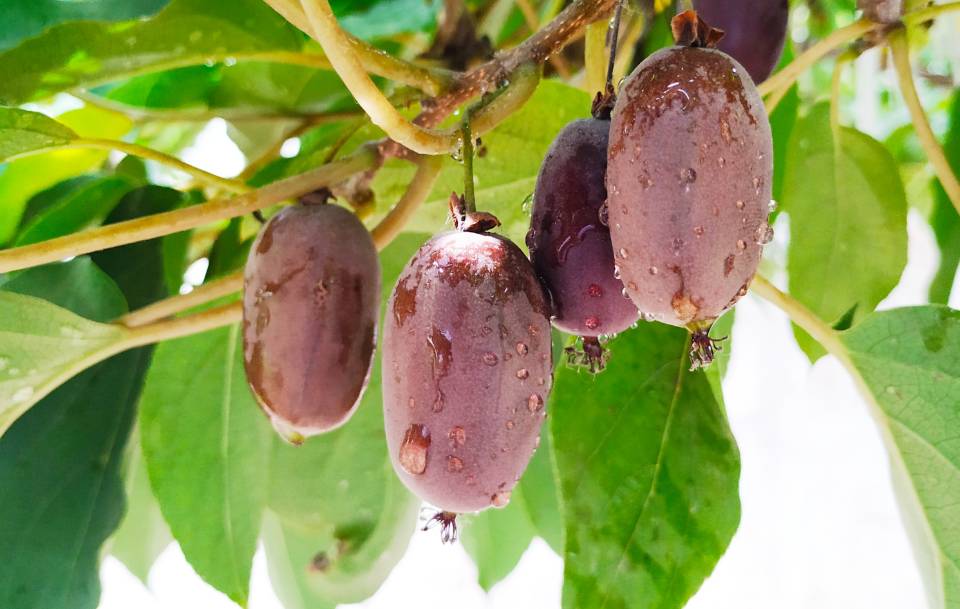Recently, an article, entitled “MicroRNA858 negatively regulates anthocyanin biosynthesis by repressing AaMYBC1 expression in kiwifruit (Actinidiaarguta)” completed by Prof. Jinbao Fang’s lab from Zhengzhou Fruit Research Institute, Chinese Academy of Agricultural Sciences, was published in international botanical journal Plant Science (5-year if = 4.253). This work mainly focused on the genomic localization and functional verification of key regulator. Additionally, it provided molecular basis for genetic improvement of kiwifruit color quality.

Actinidiaarguta,Ruby Star
China is the origin of Actinidia genus with abundant germplasm resources. The larger cultivation proportion of green kiwifruit (90%) than red make it impulsive to explore the molecular mechanism of red fruit coloration in order to improve its genetic resources. Anthocyanin accumulation attributes to the red color in kiwifruit, but the mechanism underlying the anthocyanin biosynthesis is largely unclear. The whole-red A. arguta fruit is a good starting material for coloration experiments. A key structural gene AaLDOX, encoding leucoanthocyanidin dioxygenase, played important role for anthocyanin biosynthetic pathway in A. arguta based on transcriptome analysis of fruits at different developmental stages (Li et al., 2018). Non-targeted metabolome analysis revealed cyanidin, delphinidin and derivative anthocyanin as the main pigments for red fruit in A. arguta. In addition, miR858, highly expressed at green-fruit stage, negatively regulated anthocyanin biosynthesis by targeting R2R3-AaMYBC1 based on combined analysis of small RNA sequencing and transcriptome results (Li et al., 2019). A anthocyanin-regulatory model of fruit response to external environmental factors was established from the results of genomic localization, normal or mutated target sites-mediated transient co-transformation in tobacco, yeast two-hybrid system, transient over-expression, gene silencing and environment induced-differential analysis to reveal the regulatory role of miR858 in anthocyanin biosynthesis of A. arguta(Li et al., 2020). All in all, the research team explained the molecular mechanism of fruit coloration based on multi-omics analysis (see figure below). The further research including discovery and functional characterization of upstream regulatory factors is still in progress. It is worth mentioning that this research team have successfully constructed approximately 2000 artificial hybrid populations of red-green A. arguta,based on which the population genetics research is under way.
The above mentioned articles were authored and corresponded by Dr. Yukuo Li (PhD) andProf. Dr. Jinbao Fang, respectively. The study was supported by the National Natural Science Foundation of China (31401825), the National Key R&D Program of China (2019YFD1000802), the Special Funds for Science and Technology Innovation Project of the Chinese Academy of Agricultural Sciences (CAAS-ASTIP-2018-ZFRI).
The URL for relevant article are shown below:
https://www.sciencedirect.com/science/article/pii/S0168945220300789
https://journals.plos.org/plosone/article?id="10.1371/journal.pone.0217480
https://www.sciencedirect.com/science/article/pii/S0378111918300295
By Yukuo Li
liyukuo@caas.cn
Figure Gene mining and functional identification based on multi-omics analysis.
